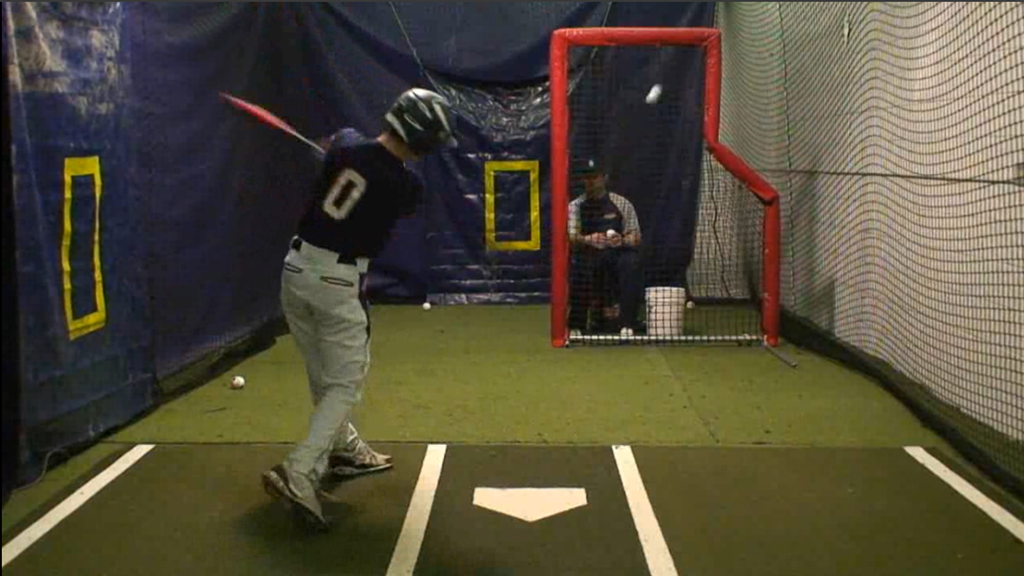|
I can't tell you how many kids quit playing the game because they can no longer adjust to higher velocities. At the high school level, the players who cannot adjust to faster velocities slowly get weeded out. Baseball is a game of constant adjustments. Hitting a 90+mph fastball is something every player can do with the right adjustments. Let's break down how to hit a pitcher who throws 90+. "Adjustments" is the key word when talking about catching up to a 90+ fastball. As you begin to move up and play at higher levels such as College or Professionally, every team has a couple of guys who can naturally touch low-90s with their stuff. If we choose to make the proper adjustments, 97mph will look like 85mph. Making the correct adjustments when facing velocity literally slows the game down for us at the plate. Here's the adjustments we teach at Core Savvy Baseball when facing a pitcher who throws 90+: 1. Have Rhythm 2. Get your foot down early 3. Stay short to the baseball These three adjustments sound very simple. Each of the three is vital if you want to have success against 90+. All three major adjustments are connected. 1. Having Rhythm We live in a world where everything around us has a frequency or rhythm. We need to have a rhythm when we face higher velocities. Rhythm can come from a number of places. When you get in your stance, any consistent movement you do before you initiate your swing is considered rhythm. Rhythm is so important because it allows us to remain relaxed and extremely loose at the plate. You've probably wondered why Major League Players look so comfortable in the batters box. They look so comfortable because of their rhythm. Almost every Major League player has some sort of cue they use to maintain rhythm. Staying relaxed with a rhythmic bat wag or front to back weight shift will make any 90+mph fastball easier to see. Vision is so important, and having rhythm allows us to achieve it. When we stand still and are static at the plate without rhythm, our head will bounce as we go forward to initiate our swing. Very few players I have come across have ever been successful with no rhythm at the plate. Alex Rodreguiz is a great example of how to achieve rhythm. Alex uses both a bat wag and a back to front weight shift to get such outstanding rhythm. This allows his body to stay relaxed and his head level. Go ahead and watch the video below to see just how good Alex's rhythm is. Pause before the pitch is released, and take a look at how his rhythm allows him to get his hands and feet in perfect position to initiate his swing. I suggest that all players try to copy Alex's rhythm.
3. Staying short to the baseball Players hear this term all the time. At Core Savvy we have a little bit of a different take on what "staying short to the baseball" means. Many coaches who are uninformed will tell their players to "shorten up their hand path" (whatever that means) to hit 90+. Like I said earlier, we are not going to make any adjustments mechanically when facing velocity. Mechanical adjustments during the game will almost guarantee you an 0-4 day. Practice is the time to work on hand path, not the game. We are never going to change our swing mechanics for the pitcher during the game. What staying short to the baseball really means is simply not trying to do to much. When we are facing 90+, there is no need to take home run swing. The velocity of the pitch will do all the work for us as hitters as long as we can barrel the baseball. I tell all of my students to swing at 70% when facing high velocities. This will naturally allow us to stay short to the baseball because we are not muscling-up. Swinging at 70% will also keep you very relaxed in the box. Many players think that they need to muscle-up to fight off 90+. We are actually slowing our bat speed down significantly when we clinch our muscles to take a home run swing. Swing at 70% and do not change anything about your hitting mechanics when facing 90+mph! CSB Extra : Front Toss Drill
2 Comments
michael
1/25/2015 07:48:36 am
hey how are u i just had a terrible summer baseball season as a pitch. I throw upper 80s but just can't throw a strike. My parents want me to quit baseball but i wanna stick with it. I have decided to become either an outfielder or first base. My problem is I've always been a terrible hitter. Is it possible that i can become very good. I also have dreams of making the mlb and will do anything possible even if that means practicing 10 hours a day . thx
Reply
Thaddeus Porter
1/31/2015 07:24:45 am
Thanks for writing this. I just sent it to my 14 yr old. He is experiencing the challenge of hitting pitching as a freshman that he's never seen before.
Reply
Your comment will be posted after it is approved.
Leave a Reply. |
Core Savvy Authors : |

 RSS Feed
RSS Feed
